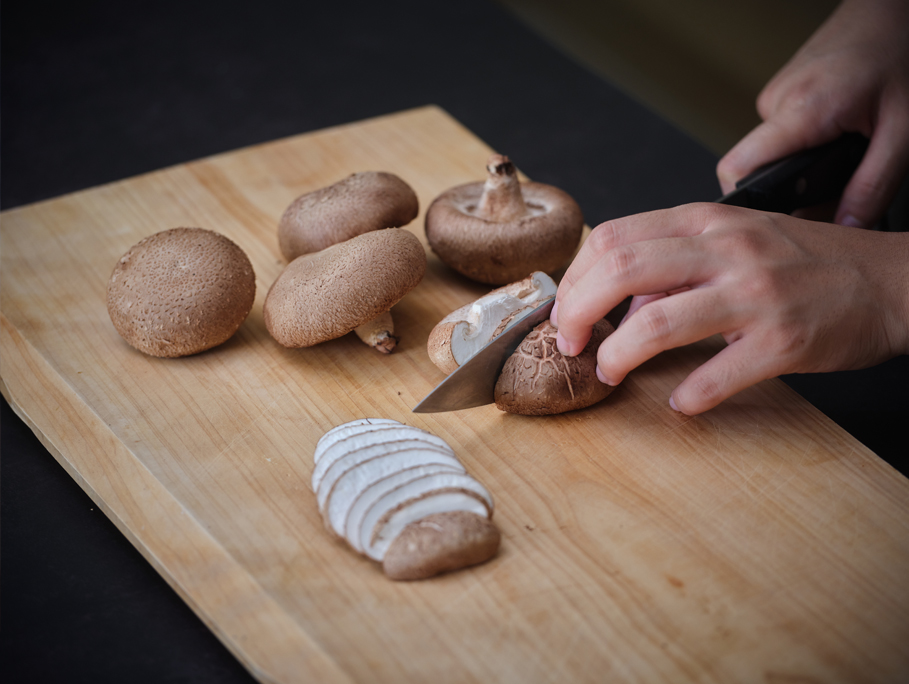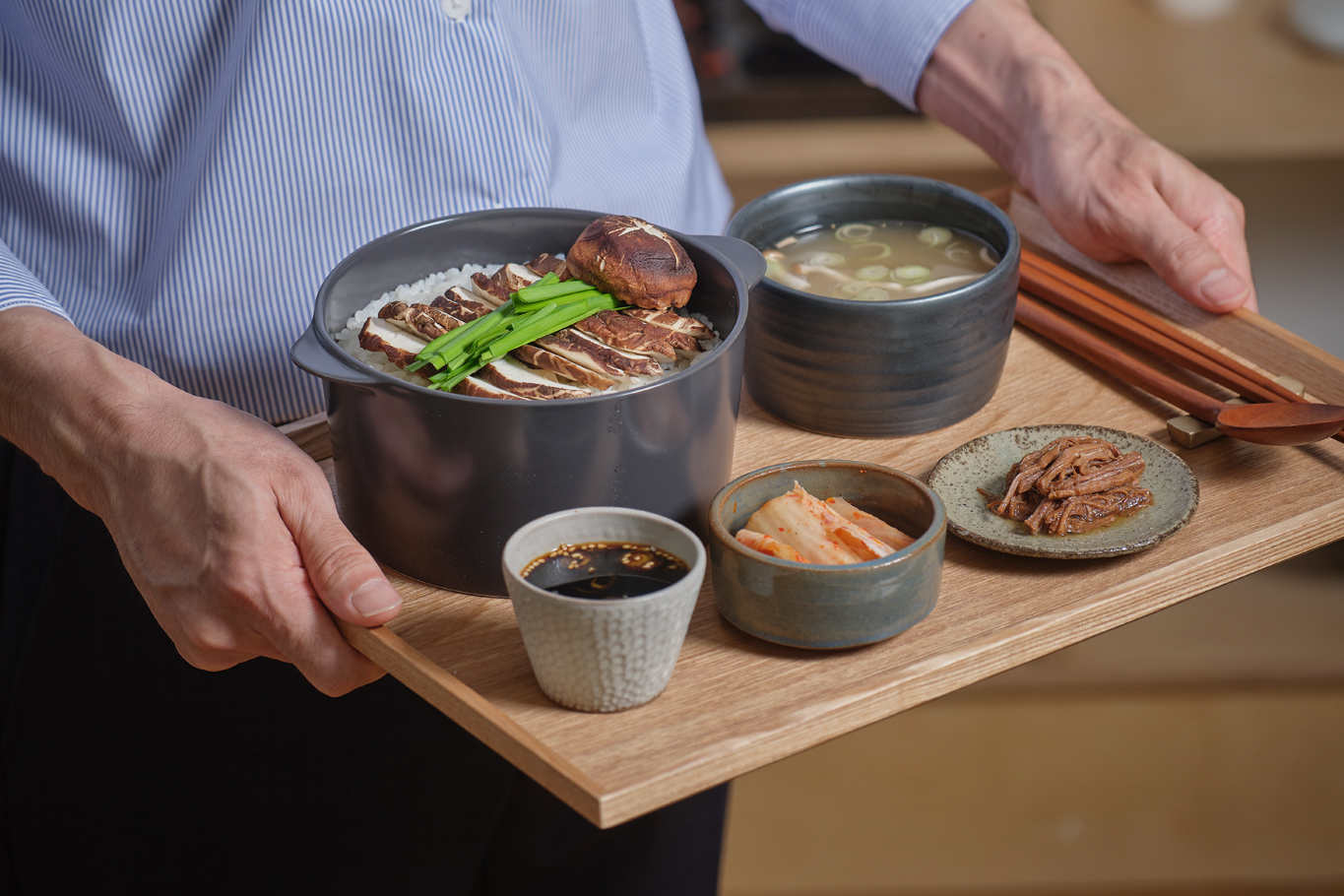September 2021

September 2021
Beoseot yeongyangbap, or mushroom steamed rice is a fixture in many Korean homes. In autumn, yeongyangbap combines newly harvested or haet rice with one’s pick of delicious and fragrant mushrooms along with seasonal legumes and nuts such as chestnuts, gingkos, jujubes and pine nuts. Just as visually appealing and nutritious as its more globally famous counterpart, bibimbap, yeongyangbap is gaining popularity among young Koreans as a way to connect with traditional Korean cuisine.
Written by
Cynthia Yoo,
contributing writer
Photographed by
Studio Kenn

In Korean culture, it’s fair to say that rice is life. It’s the main staple of the Korean diet. In fact, rice or bap is used interchangeably with the word meal in Korean. Rice served as the main indicator of the price index by the time of the Goryeo kingdom (918-1392). Even wages were paid in rice. There’s a common saying here, “We live to eat bap.”
Among the myriad of rice dishes here, yeongyangbap literally means “nutritious rice” in Korean. Perhaps the moniker is redundant since rice is synonymous with nutrition in Korean culture.
Yeongyangbap is essentially a steamed rice dish cooked with various ingredients and served with yangnyeomjang or a soysauce based sauce. There are many varieties of this one-pot wonder, often centered around a nutritious ingredient. Most yeongyangbap are composed of a variety of grains, legumes, nuts, and dried fruit to enhance the flavors and textures of the dish.
 Known for their taste, texture and efficacy, pyogo mushrooms have long
Known for their taste, texture and efficacy, pyogo mushrooms have long
been used as an ingredient in both food and medicine. © shutterstock
 Mushrooms are a major ingredient in beoseot yeongyangbap.
Mushrooms are a major ingredient in beoseot yeongyangbap.
Mushrooms are especially sought
after for their ability to add a variety
of flavors, textures, and fragrances.
During the autumn season, Koreans often cook beoseot yeongyangbap using mushrooms as the key ingredient. The autumnal beoseot yeongyangbap is also tied to one of the most important festivals in the Korean calendar, Chuseok, which falls on the 15th day of the 8th month of the lunar calendar. The harvest festival lasts three days around the time of the autumn equinox, a time that is celebrated among family and friends feasting on dishes prepared with newly harvested or haet grains, vegetables, and fruit.
Mushrooms are especially sought after for their ability to add a variety of flavors, textures, and fragrances to yeongyangbap. They come in a wide array of colors, shapes, and sizes, but some are prized for their rarity and healing powers so much so that there is a cottage industry of “mushroom hunters” who scour the hills for the sought-after fungi.
One such prized fungi is the songi or pine mushrooms named so because, yes, they grow on pine trees during the fall season. In addition to their delicious flavors and texture, songi mushrooms are famed for their presupposed anticancer properties. But other varieties of mushrooms are also valued for their nutritional benefits. Most mushrooms are packed with fiber, vitamins, and minerals, including antioxidants, B vitamins, copper, and potassium. It’s true. Mushrooms bring the yeongyang to the yeongyangbap.
 Beoseot yeongyangbap forms the centerpiece of a healthy dining table.
Beoseot yeongyangbap forms the centerpiece of a healthy dining table.
A great yeongyangbap relies on three elements. Make sure there’s a key ingredient like semi-dried fish to center the dish. Koreans often use flounder as the focus ingredient. The other two elements to consider are fragrance and texture.
Mushrooms are a great choice for yeongyangbap because they add fragrance and texture to the dish.
Here are a few tips in choosing and preparing the mushrooms. Aside from songyi mushrooms or pyogo mushrooms, most mushrooms are not as strong in fragrance. But they add a great texture to the dish. One tip is to cook up a fragrant pyogo mushroom based-sauce and add some oyster mushrooms into the mix to create a deliciously caramelized mushroom mixture before adding it to the rice.
Another tip to keep in mind is that mushrooms enhance the visual appeal of the dish. Mushrooms come in lovely colors and shapes that cooks can take advantage of.
There’s no hard and fast rule about whether to cook yeongyangbap in a rice-cooker or on a stovetop. But, there’s surely something about cooking rice over a low fire and seeing the smoky heat rise over the rice. The smoke seeps into the rice and gives it a kind of hearty, nutty flavor.